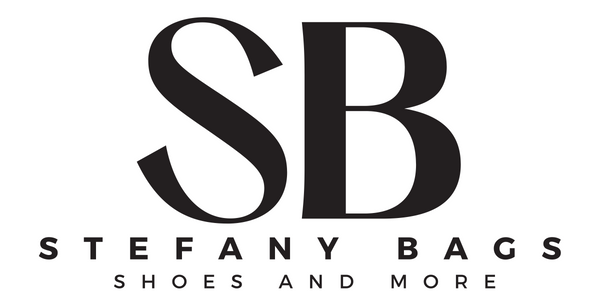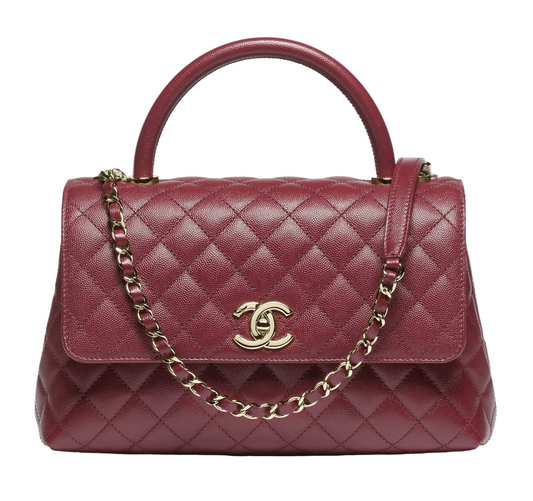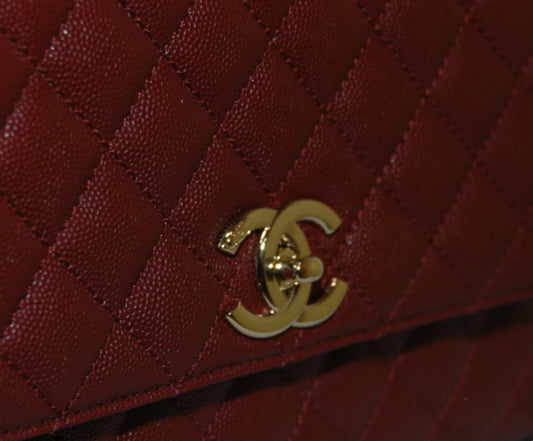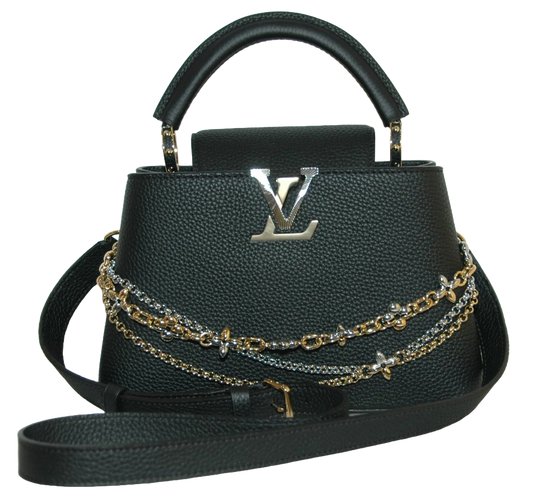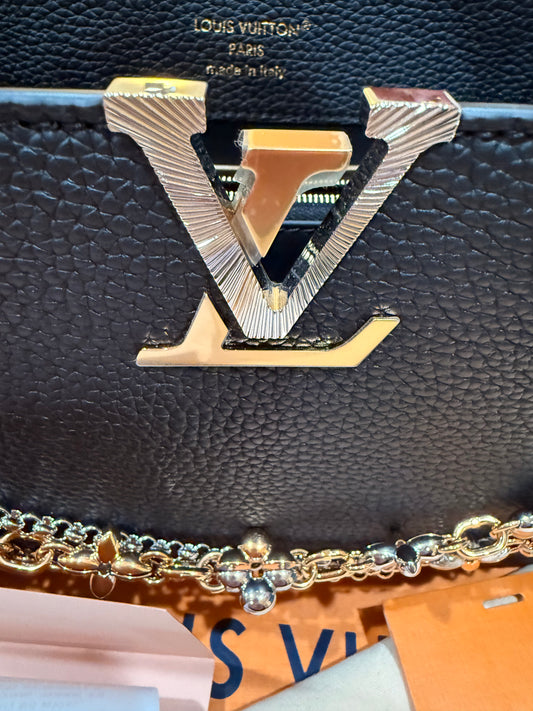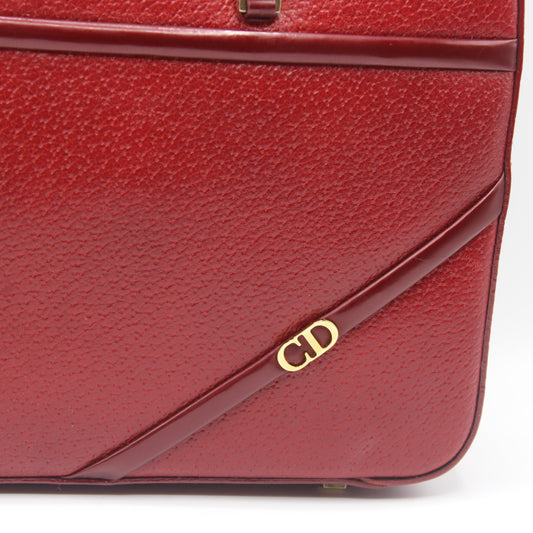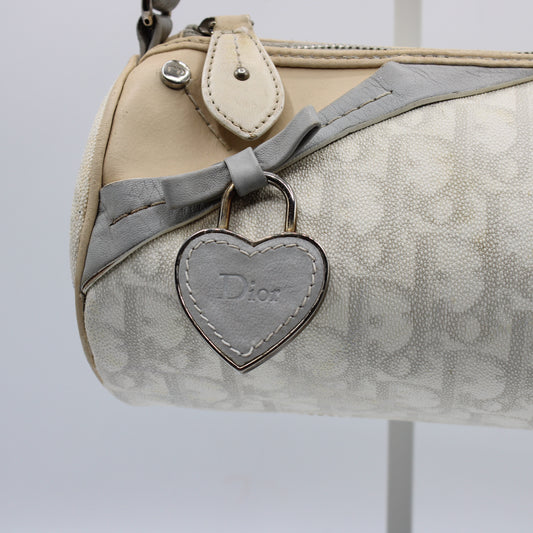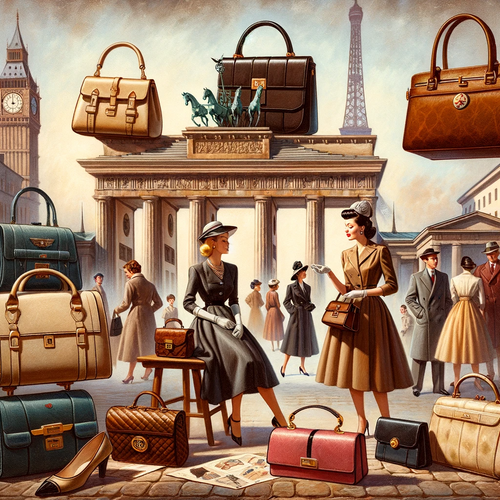
1950s Fashion: Post-War Elegance and the Feminine Silhouette Revolution
Stefany Bags Shoes and MoreShare
1950s Fashion by Stefany Bags
The 1950s stand out as a pivotal decade in fashion history, a period marked by profound transformations that redefined women's attire and style. Emerging from the shadows of World War II, this era witnessed an extraordinary evolution in fashion, driven by a desire to recapture the essence of femininity and elegance that was overshadowed by the war's austerity. The post-war period was characterized by a wave of optimism and economic prosperity, which greatly influenced the fashion industry and the societal norms of the time.
As the world healed from the ravages of war, fashion emerged as a symbol of renewal and hope. Women, who had taken on more utilitarian roles during the war, were now embracing a style that celebrated their femininity and grace. This transition in fashion was not just a change in aesthetics; it reflected deeper socio-cultural shifts. The end of the war brought about significant changes in societal structures, attitudes, and gender roles, all of which played a crucial role in shaping the fashion trends of the 1950s.
The 1950s marked a dramatic shift in women's fashion, characterized by a return to femininity and elegance. This shift was deeply influenced by the socio-economic changes and cultural trends post-World War II, leading to a fashion revolution that redefined women's style and self-expression. This era's fashion was not only about the clothes women wore; it symbolized a broader societal transition, reflecting the changing times and the evolving role of women in the post-war world.
Post-War Socio-Economic Environment
The post-war socio-economic environment of the 1950s was a period of significant transformation and recovery. After years of global conflict and economic hardship, the end of World War II ushered in an era of relative peace and prosperity, particularly in the United States and Western Europe. This era was marked by a booming economy, technological advancements, and a surge in consumerism. The war's conclusion led to a widespread sense of relief and optimism, setting the stage for a decade of growth and stability.
During the war, fashion had been dictated by necessity and scarcity. Materials were rationed, and designs were practical and utilitarian, focusing on functionality over style. Women's fashion was no exception, with simple cuts and minimal embellishments to conserve fabric and resources. However, as the war ended, this austerity gave way to an era of abundance and extravagance in fashion. The post-war economy allowed for the production of more luxurious and varied fabrics, and designers were no longer constrained by the limitations of wartime.
This economic boom had a profound impact on women's roles and societal expectations. During the war, many women had entered the workforce to fill the gaps left by men who went to fight. This experience gave them a taste of independence and financial autonomy. However, with the return of the soldiers, societal norms shifted, encouraging women to leave their jobs and return to domestic life. Fashion reflected this change, with a move towards styles that emphasized femininity and elegance. The idealized image of the 1950s woman was one who was well-dressed, sophisticated, and devoted to home and family, a stark contrast to the more practical and robust image during the war years.
Christian Dior's New Look
In 1947, Christian Dior, a relatively unknown French fashion designer at the time, revolutionized women's fashion with the introduction of his "New Look." This fashion line was unveiled in a collection that Dior described as the "Corolle," named for the botanical term corolla or the circle of petals around a flower. This collection marked a radical departure from the wartime styles and was a breath of fresh air in the fashion world, swiftly becoming a defining moment in 1950s fashion.
The New Look was characterized by its sharp contrast to the restrained, utilitarian clothing of the war years. Dior's designs featured cinched waists, creating an hourglass silhouette that emphasized a woman's curves. The skirts were full and voluminous, often requiring yards of fabric, a stark contrast to the fabric-conservation measures during the war. The emphasis on the bust and hips reasserted traditional femininity, a deliberate move away from the more androgynous styles that had prevailed during the war. These designs were a celebration of luxury and femininity, using an abundance of fabric, intricate details, and a meticulous approach to tailoring.
The reaction to Dior's New Look was mixed, mirroring the rapidly changing post-war society. The fashion industry hailed it as a groundbreaking and visionary approach, breathing new life into the stagnant world of post-war fashion. Dior's designs quickly trickled down to mainstream fashion, influencing styles and trends worldwide. The New Look became synonymous with elegance and sophistication, setting the standard for high fashion in the 1950s.
However, the cultural reaction was not uniformly positive. Some criticized the New Look for its extravagance, especially in light of the recent austerity. There were those who saw it as a step backward for women, fearing that the return to traditional femininity would undermine the gains women had made during the war years. Despite these criticisms, the New Look persisted and continued to influence fashion for years to come.
Advancements in Materials and Technology
As the world bid adieu to the grim days of World War II, the fashion industry welcomed a wave of material and technological advancements that would redefine the essence of style and comfort. The post-war period wasn't just about rebuilding cities and mending lives; it was also about weaving the fabric of a new era in fashion, quite literally.
Imagine walking into a store in the late 1940s or 1950s. You would be greeted by an array of fabrics that were not just luxurious to the touch but also a testament to human ingenuity. Innovations in textiles were remarkable during this period. Nylon, first used for parachutes and military supplies during the war, now found its way into stockings, forever changing the ‘hosiery game’. It was like a revolution under the skirts! No more constant mending of silk stockings. This was practicality meeting elegance.
Then came the introduction of new materials like polyester and acrylic, which promised durability and ease of maintenance. Imagine the joy of a housewife, previously accustomed to the laborious task of washing and ironing cotton dresses, now finding herself in possession of a garment that held its shape and color with minimal fuss. These materials were not just fabrics; they were the harbingers of a lifestyle change, making fashion more accessible and less burdensome.
Most intriguing was the rise of ready-to-wear collections. Gone were the days when a dress was a labor of love, tailored over weeks. Now, fashion was on the go. Ready-to-wear collections democratized fashion. It didn't matter if you were in Paris, New York, or a small town anywhere in the world; stylish, well-fitted clothes were within reach. This was a quiet revolution, one that whispered of empowerment and choice. Suddenly, the latest styles weren’t just for the elite; they graced the wardrobes of the everyday woman.
Influence of Hollywood and the Media
In the 1950s, Hollywood and the media were like the twin stars of a glamorous galaxy, guiding the fashion choices of millions. The silver screen wasn't just a portal to escape reality; it was a vibrant canvas that showcased the latest fashion trends, with Hollywood celebrities serving as the de facto trendsetters. The impact of Hollywood on fashion was profound and far-reaching, turning actors and actresses into style icons whose influence extended well beyond the movie theater.
Imagine the enchanting Audrey Hepburn in "Roman Holiday" (1953), wearing that iconic white shirt and full skirt. Her look became an overnight sensation, embodying elegance and grace. Hepburn's style, both on and off-screen, was characterized by simplicity and sophistication, influencing women to embrace a more refined and understated chic. Then there was Marilyn Monroe, the epitome of glamour and sensuality, who left an indelible mark on fashion with her form-fitting dresses, most famously in "The Seven Year Itch" (1955). Her style played a crucial role in popularizing more daring and feminine silhouettes.
The influence of Hollywood was amplified by fashion magazines and advertisements, which served as conduits, bringing the glamour of the big screen to the everyday woman. Magazines like Vogue and Harper's Bazaar were not just publications; they were the holy grails of fashion, offering glimpses into the stylish world of Hollywood and beyond. Advertisements, too, played a pivotal role. They were no longer mere commercial pitches but a reflection of contemporary fashion trends, often inspired by the movies and their stars.
Specific films and stars left lasting impressions. James Dean's rebellious look in "Rebel Without a Cause" (1955) influenced men's fashion, making the leather jacket and jeans an emblem of youthful defiance. Grace Kelly's refined elegance in "To Catch a Thief" (1955) influenced formal fashion, promoting a graceful and poised look. These stars weren't just actors; they were the trendsetters of their era, their movies serving as fashion catalogues.
Evolution of Women’s Fashion Throughout the Decade
The 1950s were a dynamic decade for women’s fashion, marked by a fascinating evolution from conservative styles to more relaxed and diverse trends. This period saw the influence of legendary fashion houses like Gucci, Fendi, Yves Saint Laurent (YSL), and Dior, each contributing uniquely to the fashion narrative of the time.
In the early 1950s, the fashion scene was dominated by conservative styles, heavily influenced by Dior's New Look. The emphasis was on formality and elegance, with women donning tailored suits, fitted blouses, and full skirts that celebrated a traditional feminine silhouette. Gucci, primarily known for its leather goods, began to emerge as a symbol of luxury, with its products adding a touch of sophistication to the conservative wardrobe of the time.
As the decade progressed, there was a noticeable shift towards more relaxed and varied styles. The late 1950s saw the emergence of looser, flowing skirts, and less structured garments, reflecting a more casual and comfortable approach to fashion. This shift was partly influenced by designers like Yves Saint Laurent, who began his tenure at Dior in the late 1950s and introduced a more youthful and vibrant energy into the fashion world. Fendi, though primarily focused on fur and leather at the time, also contributed to this trend by introducing softer and more fluid lines in their designs.
The 1950s were also a crucial period for the emergence of teenage fashion as a distinct style. For the first time, teenagers were recognized as a distinct fashion demographic, leading to styles that were more casual, colorful, and expressive than the adult fashions. This youth-oriented fashion was a stark contrast to the more mature and refined styles of the early 1950s.
The decade also witnessed significant shifts in women's roles, which were reflected in their fashion choices. The post-war period initially saw a push for women to return to domestic roles, reflected in the ultra-feminine styles of the early 1950s. However, as the decade progressed, women increasingly entered the workforce and sought more practical and versatile clothing, leading to the more relaxed styles of the late 1950s.
The Legacy of 1950s Fashion
The legacy of 1950s fashion is a rich tapestry that continues to influence modern styles, its threads woven into the very fabric of contemporary fashion. The era's iconic elements, from silhouettes to accessories, have been continually reinterpreted, underscoring the timeless appeal of the decade's aesthetic.
Celebrities of the 1950s played a pivotal role in popularizing fashion trends that resonate even today. Audrey Hepburn, synonymous with timeless elegance, made the little black dress (LBD) an essential item in every woman's wardrobe with her appearance in "Breakfast at Tiffany’s" (1961). This simple yet sophisticated garment remains a fashion staple, emblematic of understated chic. Hepburn was also known for her love of structured handbags, similar to styles that brands like Gucci and Fendi have reimagined in contemporary collections.
Marilyn Monroe, another style icon of the era, immortalized the halter neck dress and glamorous, form-fitting styles. Her sensuous and bold fashion choices continue to inspire modern designs that celebrate femininity and confidence. The playful yet elegant polka dot patterns, frequently adorned by Monroe, have seen a resurgence in recent years, adorning everything from casual wear to haute couture.
Grace Kelly, with her refined and graceful style, left a lasting impact on fashion. Her penchant for silk scarves and structured handbags, like the famous Kelly bag from Hermès, has influenced accessories design significantly. The Kelly bag, named after her, epitomizes the blend of functionality and elegance, a principle that continues to guide luxury accessory design.
The 1950s also marked the rise of the stiletto heel, championed by stars like Elizabeth Taylor. This footwear style has evolved over the decades but remains a symbol of femininity and sophistication. Similarly, cat-eye sunglasses, a trend popularized in the 1950s, have seen various modern iterations, reflecting the enduring appeal of vintage glamour.
Conclusion
The 1950s marked a transformative era in women's fashion, characterized by a harmonious blend of femininity, elegance, and a touch of rebellion, elements that have left an indelible mark on the fashion world. This decade, influenced by socio-economic changes and cultural shifts post-World War II, witnessed a fashion revolution that redefined women's style, transcending mere aesthetics to mirror the evolving societal landscape.
From Christian Dior's groundbreaking New Look, which reintroduced opulence and femininity, to the emergence of teenage fashion as a unique cultural expression, the 1950s were a period of innovation and experimentation. The adoption of new materials and technologies in textile production and the rise of ready-to-wear collections brought about a democratization of fashion, making it more accessible and reflective of the changing times. Hollywood and the media played pivotal roles in popularizing these trends, turning film stars into fashion icons whose influence is still felt today.
The legacy of 1950s fashion continues to resonate in contemporary styles. Elements from this era, be it the chic simplicity of the LBD or the elegance of structured handbags, are continually reimagined, highlighting the decade's enduring appeal. The 1950s taught us that fashion is not just about clothing; it's a reflection of history, culture, and social dynamics. As we look back at this pivotal era, its impact extends beyond the archives of fashion history; it is a continuing narrative that shapes how we express ourselves through our attire, bridging the past and present in the timeless language of style.
© 2024 Stefany Bags Shoes and More
